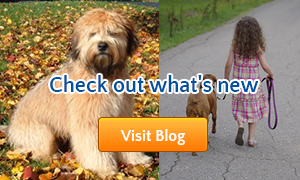Okay, so what I want to show you guys here, I just finished picking up literally like twenty minutes ago, a dog from an owner’s house. The dog is one of the more aggressive dog I’ve seen, one of the more terrified dog I’ve seen. He’s a bigger dog, probably about 80 lbs. He just freaked out, this poor dog. Now, I haven’t even really touched him yet. I don’t know how he’s going to respond to me. I think he’s going to do better. When I went to his owner’s house, he was literally just barking at me, keep down. I couldn’t get him to. The owner put him in the van for me.
And so, what I want to go through, one of the first steps that I’m going to take with a dog like this is start bonding with the dog, to start relating with the dog and start showing leadership to the dog from the get go. Now how does this benefit you the dog owner is in a number of different ways. If you’re just getting a dog just like this, this could be a big benefit. But if you’ve got a dog that has aggression issues, severe anxiety issues, fear issues like this guy, the best way to overcome that is to start bonding with the dog and the dog’s trust through obedience. Obedience is the best way because it puts you in the leadership position and it puts the dog in the follower’s position. And if you do it right, it makes the dog very comfortable as time goes on. Initially, I think this guy is pretty freaked out. This is the first time I’ve ever in this way. He’s a dark dog and I don’t know if you can see him but he’s deep in the back, he doesn’t even want to come out.
As you can see the first thing out - this is what’s called avoidance behavior. He knows I’m here. He’s not a dummy. He’s trying to do everything he can to look away from me. Dogs are stressed out, they’ve only gotten three responses and I’ve talked about this before in different segments. But dogs have the fight response; I mean they bark, they bite, they growl, whatever. Then they’ve got the flight response, meaning they run away. And they’ve got the avoidance response. that the issue isn’t there. And so this guy hasn’t really even looked at me yet. He’s looking this way, and then he’s looking this way. And he’s doing everything he can to make sure that - now he’s looking at me. He’s pretty afraid here.
I’m going to get a training collar on him. I’m going to remove him from that collar. Now he’s got a muzzle on because initially that was the only way that the owner felt comfortable being around him. That kind of the aggression. So, the reason I’m getting the training collar on him is so that immediately I can start putting him in the follower position by getting him to do the things that I want him to do. If he takes control because he’s on his regular collar, he’ll start pulling me around, getting freaked out and trying to run away, take control, then we’re going to be in bad shape.
I need to control every little thing that’s going to happen in this dog’s life in the next little bit. How he eats, when he eats, how he walks, the way that he walks, how he comes when called, how he waits at the door. I need to be pretty controlling because from the control is going to come structure. From the structure is going to come obedience, and from obedience is going to come a dog that feels much more calm and much more relaxed and a dog that can trust me because I’m the one that’s giving him structure. And once that happens I’m going to pass that back to him and teach him how to maintain that structure.
So, with a dog like this, with an aggressive dog, like I said, how this applies to you is almost all aggressive dogs I work with, I could say 90% also are heavy pullers. They pull on the leash a lot when they go on a walk. This one is no exception. With his owner, she pulls him like nuts when they’re walking around the apartment complex. He sees another person, he just lights up and starts barking. And his case, a lot of the issues occur because the owner hasn’t - she’s a great owner - but she hasn’t necessarily given him the leadership that he needs. So, he feels this vacuum and void of leadership and he feels that he needs to fill it up. And he fills it up with his fear behavior and showing the aggression, what not. And so, what we need to do to calm him down is give him the confidence that, “Hey, you can trust me. I’m going to protect you. I’m going to give you structure. Everything is going to be okay.” So, like I said, the first thing that I’m going to do is start getting to walk properly.
The reason I started with this exercise - if they see me doing this in other areas it’s called the crazy man method, sometimes called the focus exercise. Like I said the reason I started with this exercise is one of the causes of aggression is a dog that doesn’t focus properly. And if you listen to my other audio programs on this web site, I’m talking about it. There are three reasons for a dog to be disobedient: focus problem, communication problem, and dominance problem. Now, in this guy’s case, his reasons for aggression fall on all three. But for most dogs, a big part of why they’re aggressive is a focus issue.
If he’s walking and he sees another dog, and his focus on the owner, and they worry about the other dog, the dog makes movement and now they’re growling, and charging, and bulking and what have you. So, focus is a big issue. Same thing at the door. Someone rings the door bell, the dog loses focus. His owner is trying to do something, but the dog isn’t even listening because he doesn’t know how to focus. So, the first thing with an aggressive dog that I’m going to do that you need to do too with an aggressive dog is start teaching the dog the concept of how to focus on you. Like I said, I do this crazy man method. I’m not going to talk too much about the theory about the crazy man because you can go to the other videos and check that out. But, with this crazy man method it teaching him how to focus.







